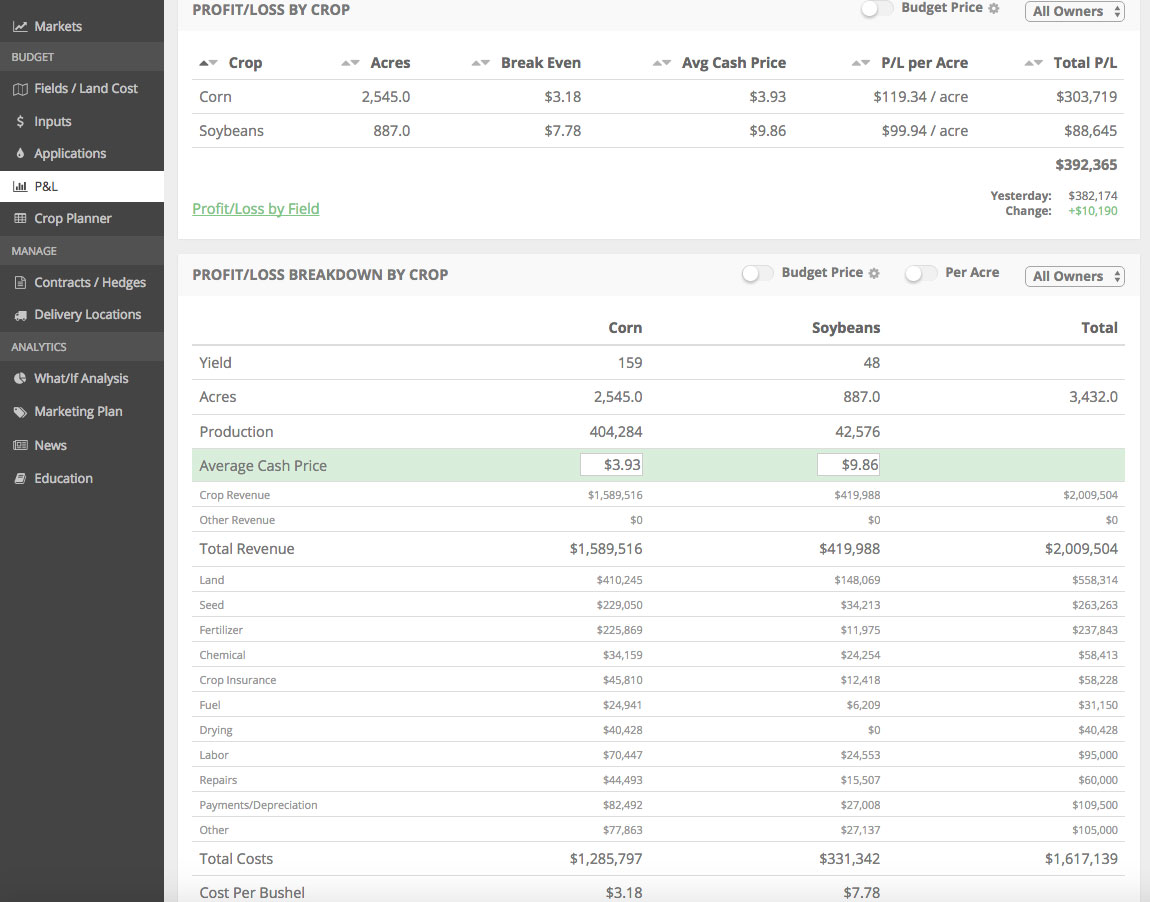I frequently see news articles and ag companies that tout aggressive farm growth as the ideal way to run a farming business. It drives me crazy and it frustrates farmers that aren’t willing to “grow at all costs”.
Quite simply the easiest way to “get big fast” is to pay top-of-market cash rents. In a commodity business the low cost producer typically thrives. The low cost producer isn’t the producer who has the lowest cost per acre rather the lowest cost per unit of production (eg. per bushel). Producing the most crop at the lowest cost relative to your peers is one of the main ingredients to farming success.
Paying top-of-market cash rents makes this materially more difficult.
I should preface this with the fact that one of the most business-savvy farmers I know is a very large operator (40,000+ acres). He’s been successful but I would argue that its much easier for a 1,000-3,000 acre farm to build a solid, enviable net worth with less risk.
Bigger Isn’t Always Better
Recently, I met a farmer who farms slightly over 2,000 acres with 1,500 of it being land that he owns free and clear. He also has substantial debt-free investments in machinery, grain storage, and multiple small apartment buildings. All-in-all, his net worth exceeds $10 million. That’s successful in my book!
Here are his lessons for where he got to where he is today.
- He told me he prides himself in making ROI-focused decisions in every aspect of his farm. If he’s making an investment in his crop he needs to be highly confident that he’s going to achieve a ROI. While it doesn’t always happen, he focuses on his bottom line.
- He’s most proud of his early and heavy use of drain tile. He claims that drain tile is the most profitable investment that he’s made on his farm. (Check out this blog post to see just how powerful small incremental farm improvements can be)
- Another decision that he made 20+ years ago was to separate his basis and futures marketing. He uses a mix of futures hedges and HTA contracts to manage his futures risk while setting the basis during times of the year when farmers are busy do other things (fall tillage, planting, etc.).
- And not surprising, he hasn’t been shy about paying taxes over the years and using that after-tax money to prudently pre-pay debt.
- He’s an active partcipant in a university-sponsored farm management group. This non-competitive peer group has provided a great sounding board for his farm management decisions.
- Luck! Great crops in 2010 and 2012 each added over $1 milllion to his net worth. But to his credit he turned the crop to cash and ensured that this good fortune led to an actual gain to his net worth not simply a paper gain.
Bigger isn’t always better!
All-in-all, this producer didn’t do anything magical to get to where he is today. He is simply a good farmer and a sound businessman. Take articles on aggressive farm growth with a grain of salt and focus on making your operation as “lean and mean” as possible.
If you’re interested in implementing this ROI-focused and numbers-oriented approach on your farm, you should check out our farm management software. Click the button below for access to a free live demo account.

Nick Horob
Passionate about farm finances, software, and assets that produce cash flow (oil wells/farmland/rentals). U of MN grad.

